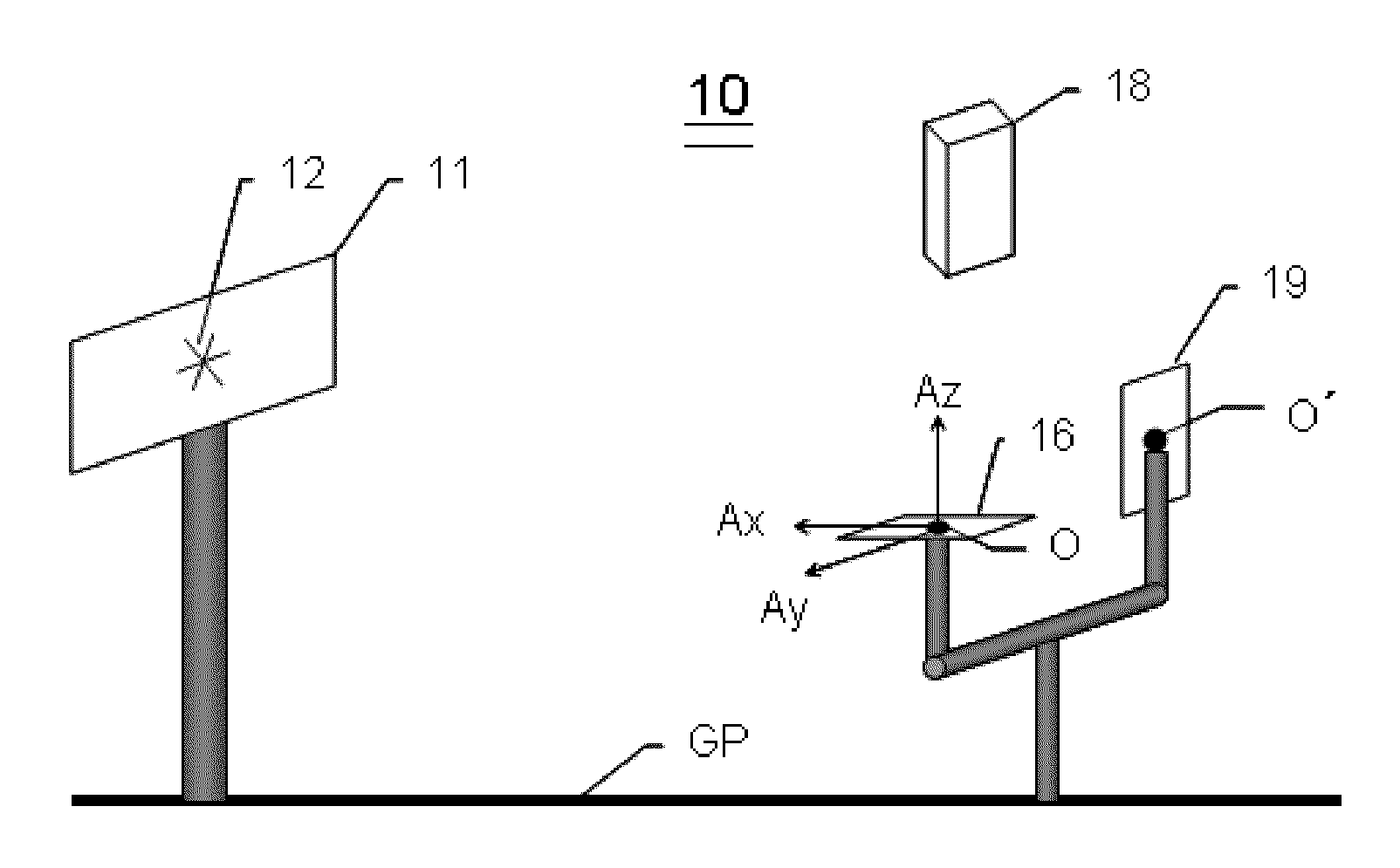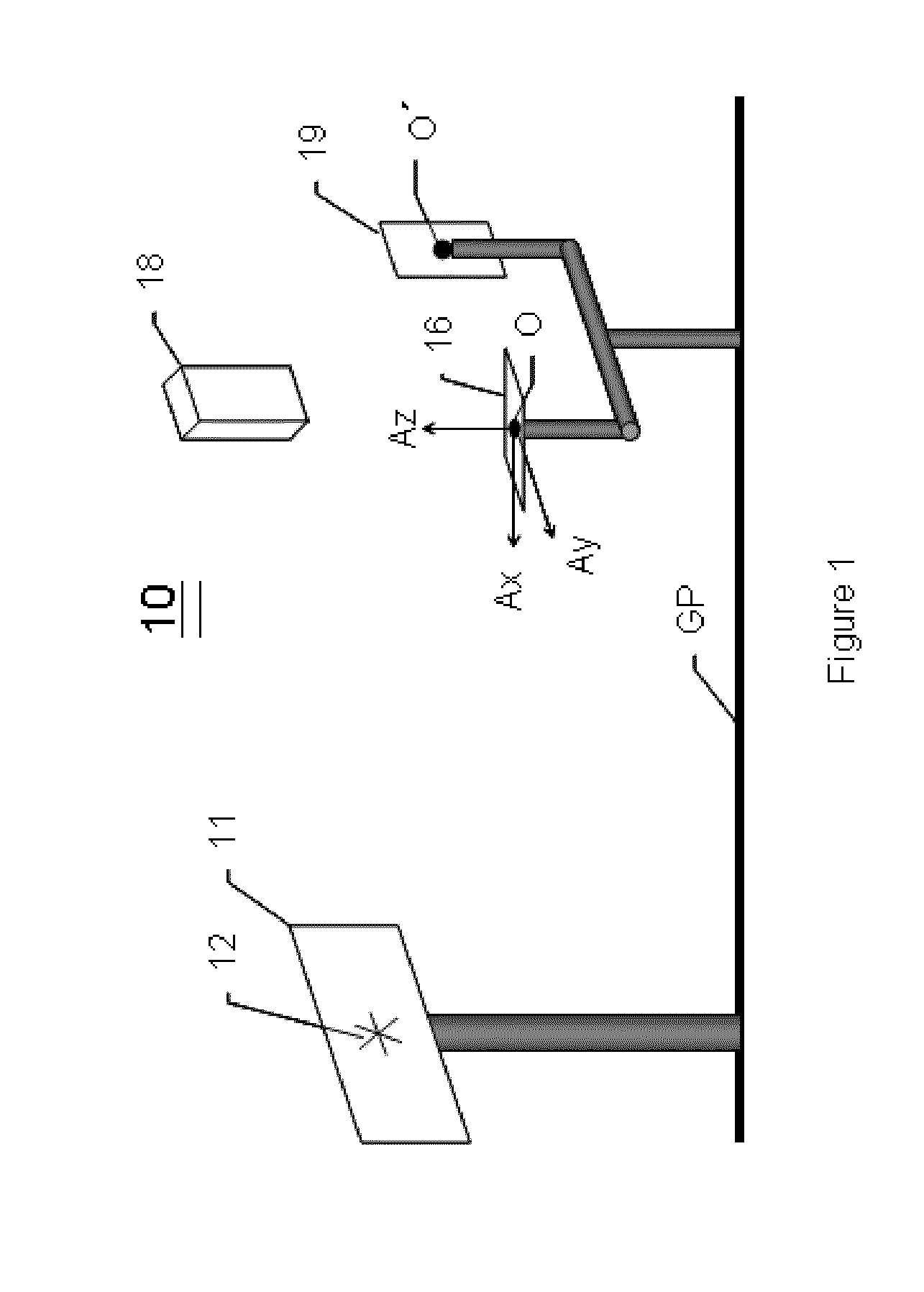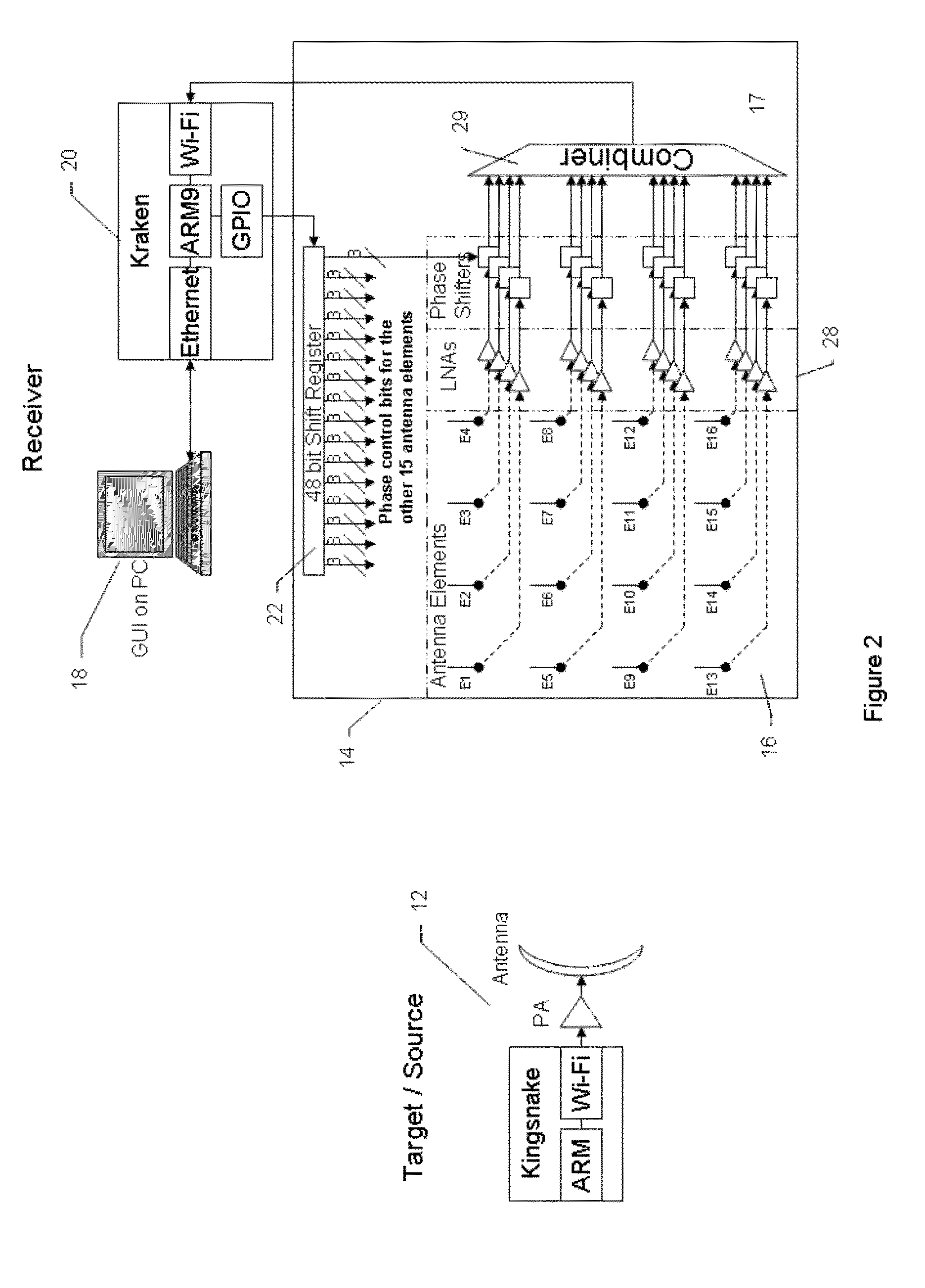System and method for locating a point in space
a technology of space and point, applied in the direction of antennas, direction finders, instruments, etc., can solve the problems of time-consuming and laborious pointing and locating processes, data exchange between the elements of the system can be easily compromised, and critical signals may be los
- Summary
- Abstract
- Description
- Claims
- Application Information
AI Technical Summary
Benefits of technology
Problems solved by technology
Method used
Image
Examples
Embodiment Construction
[0015]According to one series of embodiments, the invention is described in the context of a system and a method for locating a point in space based on receipt of a radio frequency (rf) signal from the point. In the illustrated example, all of the components are terrestrially based, but the invention is not limited to determination of location with respect to propagation between points over a ground plane. As used herein, the term point corresponds to a point in space or to a region associated with the location of an object wherein the location of the region could be approximately described by the point.
[0016]According to an embodiment of the invention, FIGS. 1 and 2 illustrate components of a system 10 for establishing the direction of location of an object 11 based on a radiating source 12 co-located with the object. The direction of location, i.e., a pointing direction, is determined relative to a position 13 which is the origin, O, of a reference coordinate system. Programmable ...
PUM
 Login to View More
Login to View More Abstract
Description
Claims
Application Information
 Login to View More
Login to View More - R&D
- Intellectual Property
- Life Sciences
- Materials
- Tech Scout
- Unparalleled Data Quality
- Higher Quality Content
- 60% Fewer Hallucinations
Browse by: Latest US Patents, China's latest patents, Technical Efficacy Thesaurus, Application Domain, Technology Topic, Popular Technical Reports.
© 2025 PatSnap. All rights reserved.Legal|Privacy policy|Modern Slavery Act Transparency Statement|Sitemap|About US| Contact US: help@patsnap.com



